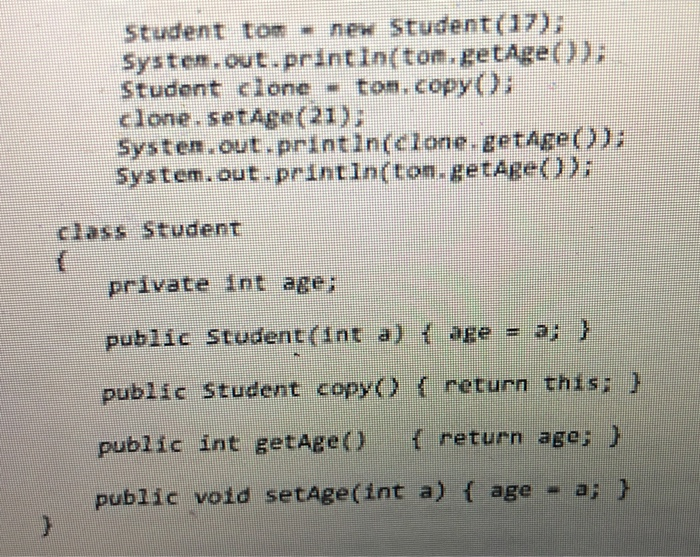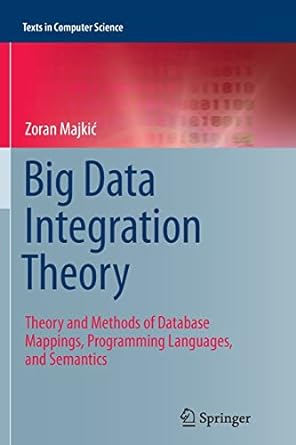Answered step by step
Verified Expert Solution
Question
1 Approved Answer
Student ton - new Student(17): System.out.println(ton.getAge()); Student clone - ton. copy ( ): clone.setAge(21); System.out.println(clone.getAge()); System.out.println(ton.getAge()); class Student private int age: public Student(int a) {


Step by Step Solution
There are 3 Steps involved in it
Step: 1

Get Instant Access to Expert-Tailored Solutions
See step-by-step solutions with expert insights and AI powered tools for academic success
Step: 2

Step: 3

Ace Your Homework with AI
Get the answers you need in no time with our AI-driven, step-by-step assistance
Get Started


